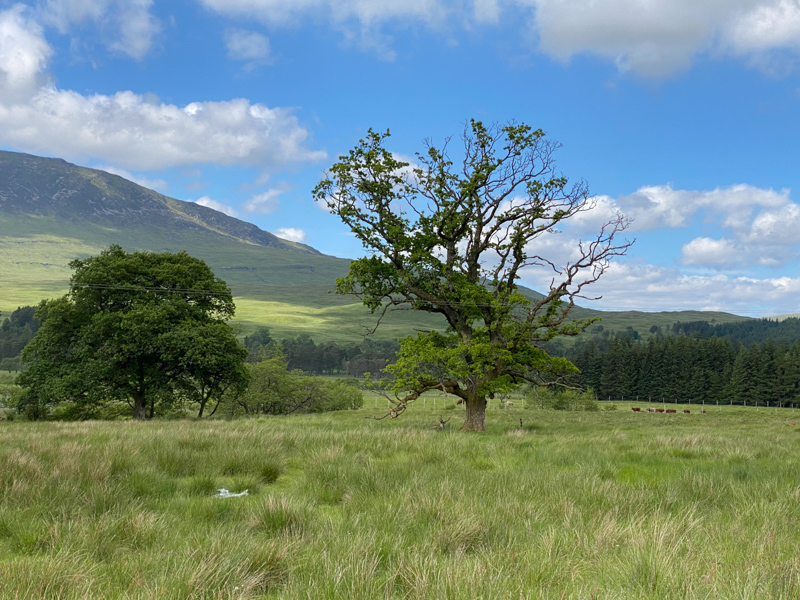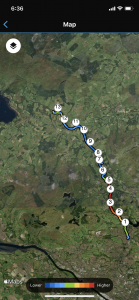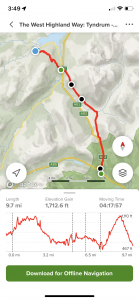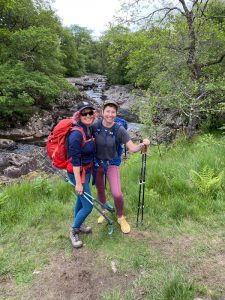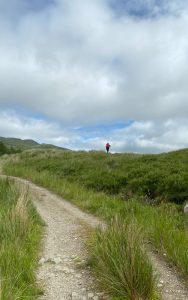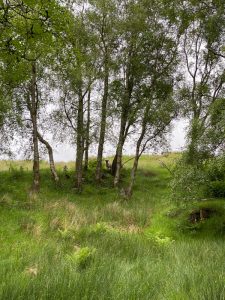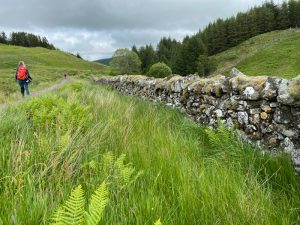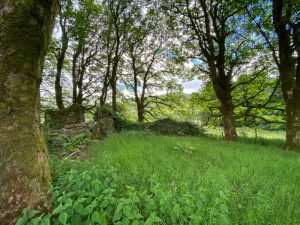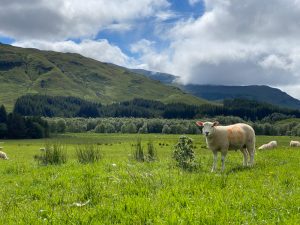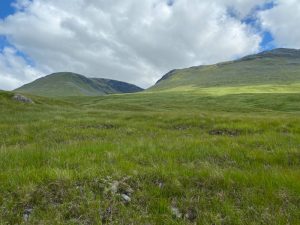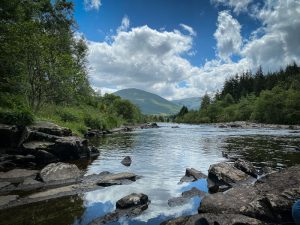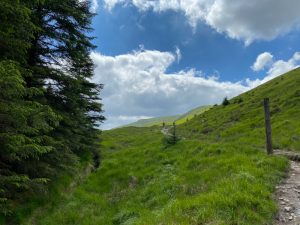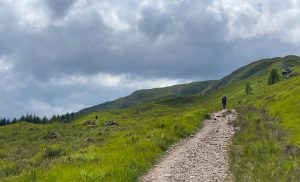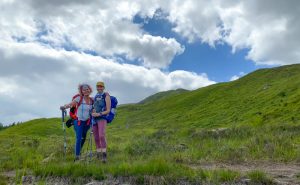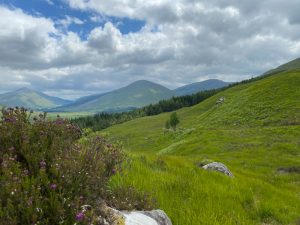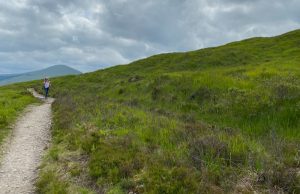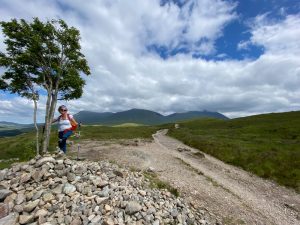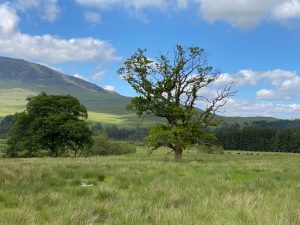And good luck to you if you can remember the difference between Inverarnan, Inveroran, and there’s another spot on the map we’ve had to use as a reference point for several days called “Inversaid.” In addition to “switchbacks” I believe I will consider introducing the Scots to some novel phonemes at some point.
These last couple of days have gone a fair bit easier. The distances and the terrain both have lightened up on us, giving us easier trekking days and more time in the evenings to recover (which we’ve used mostly to nap, eat, and lie around groaning). The scenery has gotten more and more spectacular (and full of sheep) as we’ve moved further north and climbed further into the actual highlands. We’ve never really been far from civilization — for most of the trek there’s been traffic noise audible (or directly alongside us at many points) — but we’ve been getting into more rugged scenery and more wild-seeming stretches of landscape for the past several days now.
I say wild “seeming” because it turns out none of this landscape looks the way it would have naturally — these grass-tufted glens were all entirely woodlands only a couple hundred years ago. They look ‘natural’ and ‘wild’ to us now, but their original forest foliage was stripped clear and fed into the hungry maw of the industrial revolution — all these softly glowing green hillsides denuded of trees which were simply devoured in steelyards dependent on Scottish Highlands coal. Any forest we’ve walked through so far is basically ‘new’, as far as it goes. In the next day or two we’ll see some of the only true “wild” old-growth forest left remaining here. It’s just staggering to think of the raw tonnage of biomass taken off these mountains (and the manpower it took to move it).
That’s what I’m marinating on as we luxuriate in our incredibly picturesque, isolated, historic hotel (c. 1709) resting up for our 19mile day tomorrow [scared-face emoji].
Day 4: Inverarnan -> Tyndrum
- Nearabouts the Falls of Falloch
- Scottish ridgeline. A classic of the genre.
- Stay mad, sheep
- Old stone wall
- St. Fillan’s Priory has seen better days
- Sheep says hi!
- Sun-dappled path towards Tyndrum
Day 5: Tyndrum -> Inveroran
- Just straight up stunning highlands scenery (though apparently all of this used to be trees!?)
- This is where we ate lunch.
- Highlands sunny glory
- Apparently this mountain is called Mam Carraigh. Your guess on pronunciation is as good as mine.
- Highlands pano.
- Just us and the wide blue sky
- More climbing
- Climbing
- This was actually a waypoint in the guidebook. It was labeled “solitary tree”. I am including is also because I think the composition of the tree and N’s hair just makes for a really nice photo.
- This is just a cool old tree

